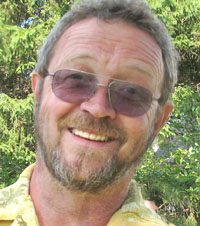We went to the theater. Actually we were in the theater. Seven of us.
For those eager to say, “I’ve heard of that place!” or “I’ve been there!” the theater is called the Speakeasy, a complete set remake of 1923 Prohibition-era underground San Francisco entertainment, where up to 75 actors walk amongst you.
To hear of it at all requires good fortune. To buy tickets and attend is a thematic challenge. Because booze was illegal from 1920 to 1933, everything is hush, hush. You buy online. You are emailed a detailed receipt and a cryptic message saying they will contact you the day before the show with further instructions. No address. If you call the number, you get a watch repair shop message.
We went with local friends, Carl and Deb Kittrell, Bud and Sandy Donaldson, and Gino. All guests are required to dress in 1920s garb. We had to visit two Goodwill stores and Party City to prepare. Carl wore his tuxedo. The women wore flapper skirts with feathers in their hair. Gino looked vintage ‘20s with his puffy cotton sleeves, black vest, and felt Stetson hat cocked.
When the message came, it said only to meet a man in a yellow hat and scarf in Jack Kerouac Alley before the show. No time given.
After a fine dinner at Pinocchio’s we hung out at City Lights Book Store and strolled the alley with other flappers and fedoras. Finally, the mystery man arrived. He leaned under a street light in mid alley and called people over to him one group at a time. He gave us etiquette instructions, and passed us off to another man in brown. Mr. Brown gave us our tickets with a map. He said to find the X and look for a clock.
After following their zig-zag directions, we came to a closed watch repair shop and squeezed through a trap door in a grandfather clock near Chinatown and Broadway. We descended a dark and crowded staircase, showed our tickets to men in tuxedos, and found ourselves with 250 other guests walking into a full-stage cabaret theater with dancing girls, comedians, and embedded customers who are part of the act.
Down the hall is a real working bar with era cocktails like the Italian Cowboy and the Cleopatra. It’s a big room with plenty of seating, a piano player and stage, rotating acts, and lots of embedded actors and surprise spotlights, sometimes right next to you.
Something is always happening at the bar, where actors rush in to hear the radio play news of the day, then an argument ensues, and maybe a song. We all joined in for “Those were the days, my friend.”
Behind a revolving bookcase is a long casino with professional dealers offering blackjack and craps. We each bought $1 in chips in advance for $10 with our $120 tickets. The chips we received were nickels, dimes, and quarters. The games are legit with proper odds and I won about three dollars. Carl was loving it all. He was into the scene up to his eyebrows.
Gambling and drinking was occasionally interrupted by surprise spotlights and embedded performances, people sharing dialogue of the times, or maybe a song.
Actors hung out in the hallways to offer shady deals and ask if you’ve seen Sally, dear Sally. Side rooms included people reading letters from the ‘20s and acting the parts, or a peekaboo into a one-way mirror at shenanigans taking place in the dressing rooms.
The second we arrived and hit the bottom of the stairs, still bewildered, two actors centered their attention on Gino. “Hey, buddy, com’ere a minute. I got a proposition for ya. Ten cases, you buy ‘em from me, take ‘em to Vinny, he’ll pay double. Whatda ya say?”
Then the other guy, “Naw, don’t listen to him. He’s a bum. Come over here.” He pulls Gino a few feet away. “What’s your name, pal?”
“Gino.”
“Gino!” The name was like a box of candy to these guys. “Hey, Ralphy, it’s Gino.”
“Hey, Gino!”
“I gotta better deal for ya, Gino,” and so on, until they let us go on to descend on another new arrival.
Every actor has a storyline, but don’t expect to be able to follow any of them. You’d have to chase after the same actors as they moved throughout the interconnecting rooms. What you get are tidbits, snippets and a sense of the Roaring ‘20s, with strong cocktails. It’s easy to lose yourself in the scenery and the times.
After a few hours of roaming, we were sitting in the bar wondering how the night would end. I still had a pocket full of good-quality poker chips that I’d think they’d want back.
That’s when the doors flew open and the place was raided by the feds, the Untouchables in brown suits. They yelled, “This is a raid. Everybody out!” They stopped each of us at the door and said, “If you have poker chips, they are contraband. Hand them over.” And that’s how they collected their chips.
Out in front of the building on the street, in the gutter, was one last show. Two janitors and some cleaning ladies, under police watch, were cursing their luck and dumping out bottles of clear hooch into the ravine. The ladies kept bringing out more bottles, which they were filling from a nearby spigot.
Steve Gibbs is a retired Benicia High School teacher who has written a column for The Herald since 1985.







Leave a Reply